Worst Backyard Pests in Virginia Beach, VA
BY LASHONDA TUCKER | AUGUST 6TH, 2019 | LAWN CARE, VIRGINIA, VIRGINIA BEACHAfter Virginia Beach’s cold and windy winters and constant rainfall, you want to enjoy your backyard barbeque or outside get-together when the weather is finally nice. Nothing can ruin your outdoor activities faster than an infestation of pesky bugs. This article explores seven of the worst backyard pests in Virginia Beach and how to get rid of them.
In this article, we’ll cover:
1. Mosquitoes
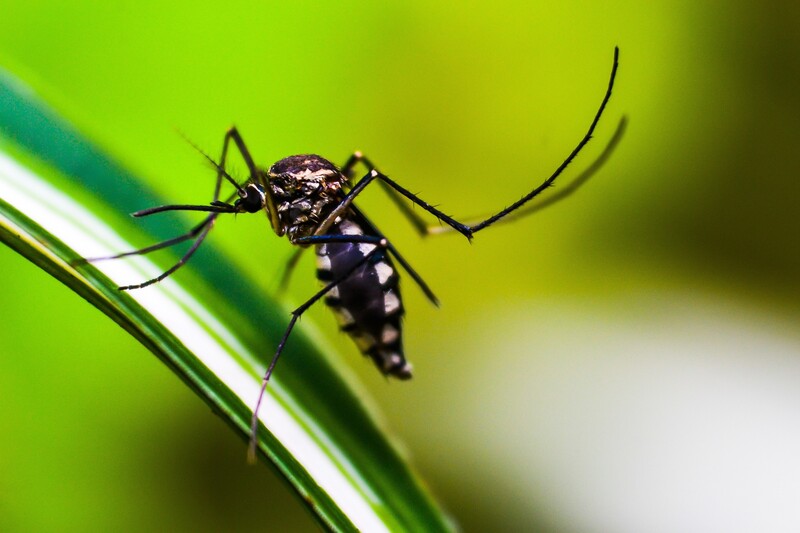
Photo Credit: Pixabay
We’re all familiar with these annoying insects that sting and leave us itching. Mosquitoes are more than annoying, they can carry dangerous diseases like West Nile Virus and Zika virus. They can also cause skin irritation and allergies. These problems alone are enough to encourage efforts for mosquito control.
Symptoms
Some common symptoms that you’ve been stung by a mosquito include red, itchy bumps that may swell. As you may already know, they turn to sores if you scratch them. If you or visitors end up with bites after hanging outside your home, it’s an indication that you have mosquitoes.
Causes
Mosquitoes breed in standing water. Any sources you have in your yard that can collect water, like birdbaths, flowerpots, or uncovered trash bins, could attract mosquitoes.
Season
Mosquitoes like to be outside during the lovely, warmer days of the year, just like humans. In Virginia Beach, mosquitoes are most active from late spring through early fall.
Treatment
There are some things you can do for mosquito control:
- Remove any objects in your yard that can be a source of standing water.
- Do not leave drinks or food outside.
- Keep containers like trash cans covered.
- Make sure gutters are draining properly.
- Use outdoor mosquito repellent sprays.
2. Fire Ants
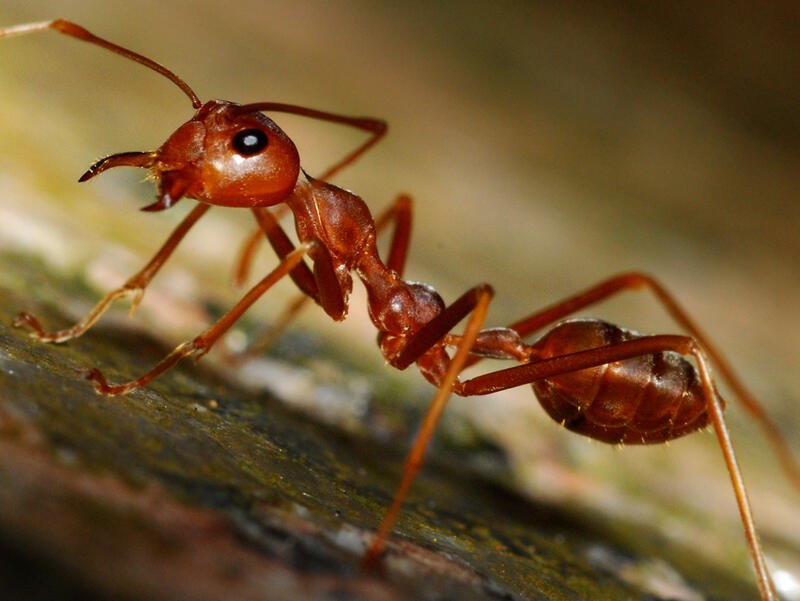
Photo Credit: William Cho / Wikimedia Commons / CC BY-SA 2.0
The Virginia area first experienced a fire ant infestation in 1989. Most of the fire ants came from infested plant products, or they traveled from infested areas that were close by.
Fire ants are another nuisance that not only disrupt your peaceful get-togethers with their mere presence, but fire ants can sting, too. Unlike mosquitoes, whose stings leave you itchy, fire ant stings are usually painful. These reddish-brown pests are known for their large, visible mounds in the soil, which can reach up to 18 inches tall. They attack anything that disturbs their nests. Some people can have an allergic reaction to fire ant stings, which can be life-threatening.
Symptoms
Fire ants build their mounds anywhere, but they gravitate towards sunny and open areas. Look out for small dirt hills or mountains. Like mosquitoes, they prefer moisture, so their homes are often found next to water sources and trees.
Fire ants like to build multiple mounds in an area. Sometimes there are hundreds of mounds across an acre of land. If you see several mounds throughout your yard, you probably have fire ants. They also build mounds in the cracks of sidewalks, around shrubs, and in landscape beds.
If you or visitors have redness and itchiness, you may have been stung by fire ants. Swelling at the stinging site can also occur. Unlike mosquito bites, fire ant stings usually turn into blisters a couple of days later, regardless of if you scratch.
Causes
Here are some things that can attract fire ants:
- They prefer sunny, warm areas.
- Leaving food out can attract fire ants.
- Excessive rain, drought, or heat may encourage fire ants to migrate to new areas for food and locations to build their mounds.
- Because they are aggressive and will attack anything that disturbs their habitat, if you’re suddenly seeing an infestation, it may be that their mounds were there all along and someone has recently disturbed their mound.
Season
Since fire ants prefer warm, sunny weather, they are most active during the summer. When the weather is cooler in the fall and winter, fire ants are less of a pest problem.
Treatment
One thing you can do if you see a mound is to leave it alone and call a professional exterminator. According to Virginia Tech, eliminating fire ants takes training and equipment that most homeowners do not have. Treating these terrors with the wrong pest control method can lead to an increased infestation.
Furthermore, mounds are not the only indicator of an infestation, which makes fire ants hard to kill. This is another reason to call a pest control company. They can give you a thorough inspection. But if you insist on doing it yourself, here are some things you can do:
- Put down bait stations. Bait stations consist of slow-acting pesticides that the ants carry back to their nest. The bait eventually kills the entire colony.
These two methods are considered to be the most effective when applied together:
- Apply bait to each mound or over the entire yard when ants are most likely to be hunting for food, which is when it’s cooler out in the early morning or late evening.
- Then, drench the mound with insecticide.
You can reduce your chances of getting fire ants by:
- Keeping your yard free of leftover food and drinks
- Not overwatering your garden or yard, as fire ants are attracted to moist soil
- Removing sources or containers of standing water
3. Fleas
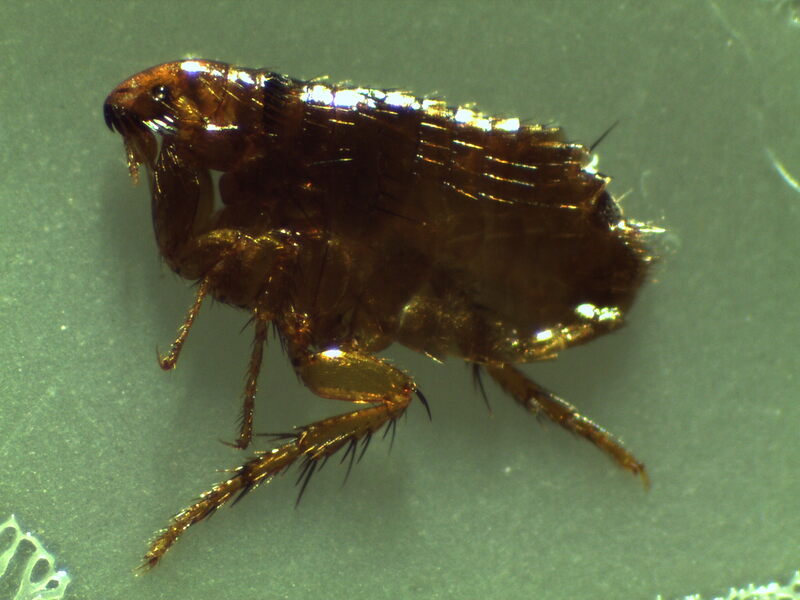
Photo Credit: Erturac / Wikimedia Commons / CC BY-SA 3.0
It’s hard to see fleas, but if you’ve ever been bitten by one, you know it doesn’t take seeing to be a believer. The most common flea in Virginia is the cat flea. Cat fleas do not discriminate, they bite dogs and humans, too. Fleas have flattened bodies and no wings.
Symptoms
Some tell-tale signs that you have fleas are itching or scratching. Flea bites can cause small red bumps. Since fleas are usually carried by pets, here are some signs you may notice on your pets.
- Hair loss
- Small black dots on the belly and around the tail and neck
- Excessive scratching that may lead to bleeding
- Excessive salivation due to ingesting the fleas
Causes
Fleas get into your yard by jumping onto mammals and wildlife that then carry the fleas to your property. Fleas love to breed in thatch. They also like to make a habitat out of piles of wood and leaves and hide in tall grass.
Season
Fleas love to make an appearance in the warmer months, during the spring and summer. But they can survive indoors during the colder winter months.
Treatment
- Use sprays that kill fleas, their eggs, and their larvae. It will probably require re-spraying monthly.
- If you have pets, use oral and topical flea products, like shampoos or medications. Check with your veterinarian if you have any concerns about which product is best.
The best treatment is prevention. Since fleas are often transported to homes by way of wildlife, reduce the chances you’ll attract wildlife by:
- Keeping your property free of food and other debris
- Making sure your grass is mowed and weeds are minimal
- Keeping trash in properly sealed containers when placing trash outside or in the garage
Because fleas travel on pets, if you have pets:
- Groom and bathe them regularly.
- Don’t walk your pet in wooded areas.
- Vacuum regularly.
4. Wasps
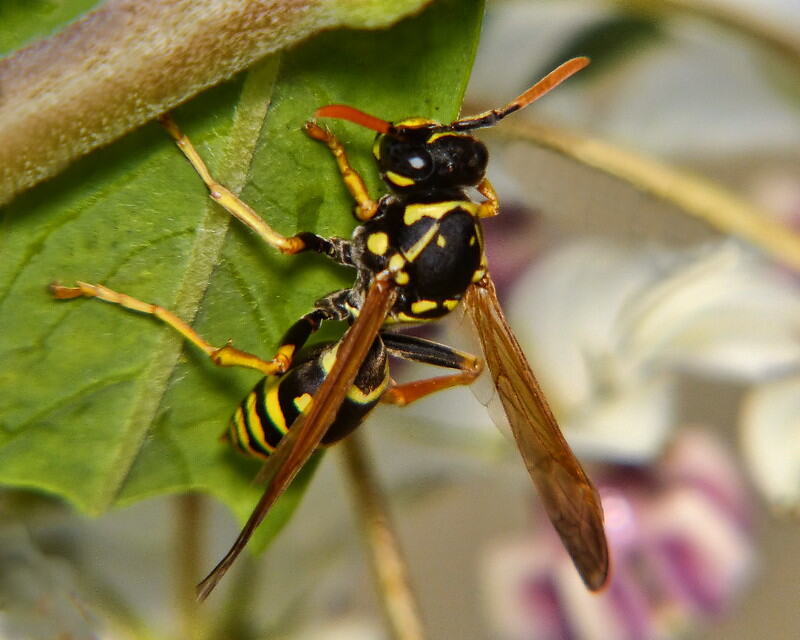
Photo Credit: Sid Mosdell / Flickr / CC BY 2.0
We’re used to seeing a bee or wasp every now and then. But when you have a wasp’s nest or other signs of a wasp infestation, it’s time to do something about it. Wasps are typically more aggressive than bees, and wasps look different.
There are several wasp species, and they differ in physical characteristics and where they build their nests. Wasps include hornets and yellow jackets, which have brown bodies and yellow stripes. Some wasps have a shiny look, like mud daubers, or dark wings, like red wasps. For those allergic to wasp stings, this pest problem could lead to death if the allergic person is stung.
Symptoms
If you have several wasps flying around a specific area, you may have an infestation. Another obvious clue is seeing a wasp’s nest. Different species build their nests in different locations. You may find wasp nests in sheds, porch ceilings, garages, vegetation, doorways, trees, or barns.
Causes
Wasps like loud clothing, good-smelling people, and potlucks. In other words, wasps are attracted to bright colors, strong smells, and food, especially sugary items. Open garbage cans may attract wasps, as can open compost bins.
Season
Wasps like to show up in the spring and fall.
Treatment
Removing a wasp’s nest can be dangerous. No one will blame you if you seek professional pest control services.
Using professional services can give you the peace of mind of knowing the problem has been eradicated. Professionals can also inspect the outside and inside of your home and find things you cannot. If you have nests hiding underground, inside of walls, or in the attic, professionals can locate and exterminate the wasps.
Here are some things you can do on your own if the pest problem seems like it can be handled with a little DIY magic.
- Purchase wasp or hornet spray and suit up in protective gear. Stand as far away from the nest as possible and spray.
- Install wasp traps.
- If it’s a small nest, spray it with a mixture of dish soap and water.
- If the nest is easily accessible, like hanging from a branch, trap the nest in a durable plastic bag. Cut the branch to remove the nest.
You can be proactive and reduce your chances of attracting wasps by keeping garbage and food sealed. You can also keep vegetation around your home trimmed.
5. Termites
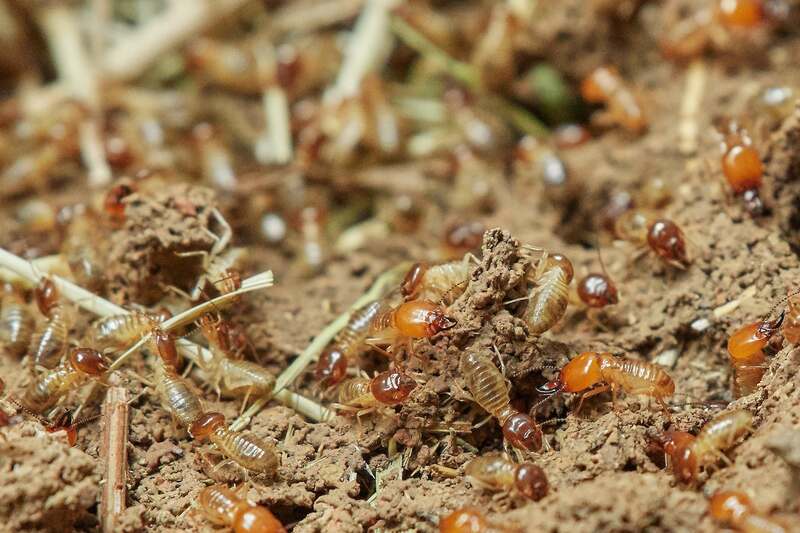
Photo Credit: Pixabay
Did you know that every year homeowners fork out over two billion dollars to treat termites? Termites have caused significant damage to homes by chewing through wooden support beams, flooring, and other materials.
Virginia Beach is victim to many different species of termites, including the most common type, subterranean termites. These little insects resemble ants. They’re usually brown, black, or yellow. They live in colonies, but you usually won’t ever see them. You will, unfortunately, eventually see the damage they cause.
Symptoms
Hollow-sounding wood or buckling floors or walls are some signs of termites. Mud tubes are also an indication. Termites travel through mud tubes or mud tunnels to access food and water. You may find mud tunnels in your home’s foundation and concrete walls. Another symptom of termites is seeing wings around entry points like doors and windows.
Causes
Termites are attracted to moisture. They are also attracted to situations where wood has come into contact with the soil, so they love wood that is decaying or damaged by water. Termites will invade wooden decks or porches in these conditions. These pests are also attracted to decks or porches that were built with poorly treated or untreated wood.
Termites also chew their way into homes when they perceive there is an availability of food.
Season
Unfortunately, termites are active year-round. They are most active in the warmer spring and summer months.
Treatment
A recurring theme of this article is prevention. Here are some things you can do to reduce your chances of a termite pest problem:
- Keep outdoor areas free of wood pile-up.
- Use treated wood and if possible, do not allow it to come in contact with the soil. Mount wooden posts and stairs on a concrete foundation. Encase posts that are underground in concrete.
- Make sure there’s good drainage around your home’s foundation.
- Store firewood in structures, so that it’s not against the house or on the ground.
- Replace or remove wood in your home that is damaged or decaying.
- Repair leaky pipes.
- Seal cracks in your home’s foundation.
- Keep gutters clean and free of clutter that could cause clogging and lead to flooding.
- Create a barrier made of gravel or concrete between your home’s exterior and the soil.
In many cases, termiticides, which are what the pesticides for termites are called, can only be administered by a professional. Some EPA-approved treatments are termite baits, wood treatments, and termiticides applied to the soil. If you’ve purchased a pesticide, only use it if the label specifically says it can be used on termites. An active infestation is best handled by professionals.
6. Cockroaches
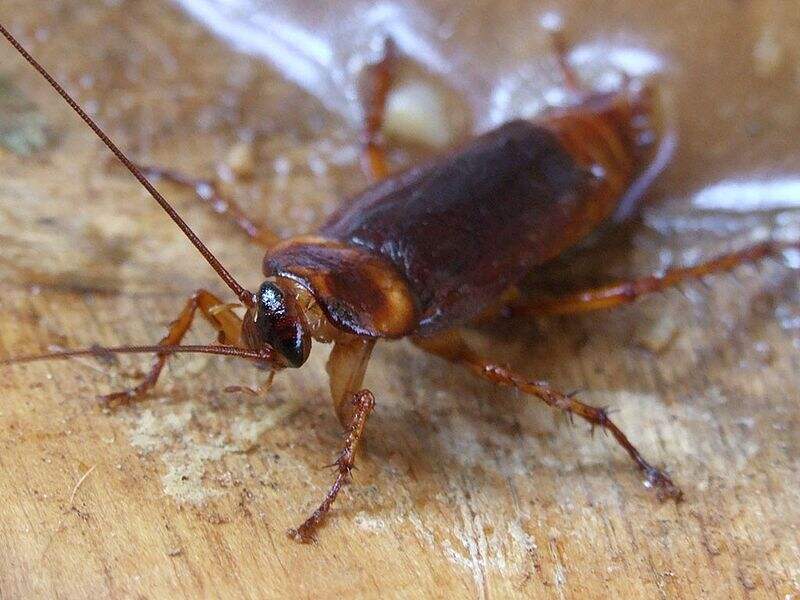
Photo Credit: Eran Finkle / Wikimedia Commons / CC BY-SA 3.0
What purpose cockroaches have in the ecosystem is probably a mystery to many people. Regardless of any usefulness cockroaches may have, when you see one, you want to make sure you never see another one. They carry several diseases, like cholera and Typhoid fever.
If you see one roach, move quickly to get rid of them. Seeing one means there are probably many more hiding.
Two of the types of cockroaches that terrorize Virginia Beach residents are German cockroaches and American cockroaches. German cockroaches are small and light brown. They’re usually located in bathrooms, kitchens, and other indoor areas where food and water are accessible.
American cockroaches are reddish-brown and larger than German cockroaches. American cockroaches enjoy the outdoors more and are typically located in yards and gardens and other outdoor areas. They actually have wings. When they get tired of being outside, they hide in dark, moist places. They invade bathrooms, basements, and crawl spaces.
Symptoms
If you see these critters in your backyard, you want to act quickly to get rid of them. You may already have them in your home. Seeing one roach in your yard or anywhere in your home is an indication that you probably have many more hiding somewhere. You may see cockroach droppings around compost bins, pet food dishes, or garbage cans. Droppings are dark and small and look like pepper.
You may find cockroach egg cases, which are typically brown and cylindrical shaped, in dark places in your yard. The cases may be in crevices and cracks or under leaves.
Cockroaches shed their skins as they grow. You may see their translucent shells under leaf piles or in crevices in the yard.
Causes
- Cockroaches are attracted to food sources. A lot of food waste or organic material in your backyard can draw roaches.
- Cockroaches need moisture to survive. Damp areas or standing water provide a breeding ground.
- Since cockroaches like to hide in cluttered, dark areas, they make a habitat out of clutter in your backyard, like woodpiles and other piles of debris.
- Neighboring properties with a roach problem can increase the chances that you’ll have a problem, too.
Season
Unfortunately, cockroach season is nearly every month of the year. The season is between March and December. That’s 10 months!
Treatment
Roaches are hard to get rid of since they’re so good at hiding. Insecticides contain harmful chemicals. Some treatments, like aerosol sprays, will kill the roaches sprayed but not get rid of the infestation. It is recommended that you call a professional exterminator for the best results.
Here are some things homeowners can do to minimize the pest problem:
- Keep your backyard clean of food, including pet food.
- Keep the lids on garbage cans.
- Reduce or eliminate standing water in your yard.
- Fix anything that can leak water, like hoses, sprinklers, or outdoor faucets.
- Prevent water accumulation by keeping gutters and drainage areas cleared out.
- Remove any piles of clutter or debris in your yard, like woodpiles.
- Spray insecticides in places cockroaches typically hide outside and, if necessary, inside the home.
- To stop cockroaches from getting into your home, seal any cracks or gaps in your roof, walls, or home’s foundation.
- Use roach bait stations or roach traps.
- Use boric acid behind and under isolated places, like stoves, refrigerators, and sinks.
- Keep your home clean.
7. Stink Bugs
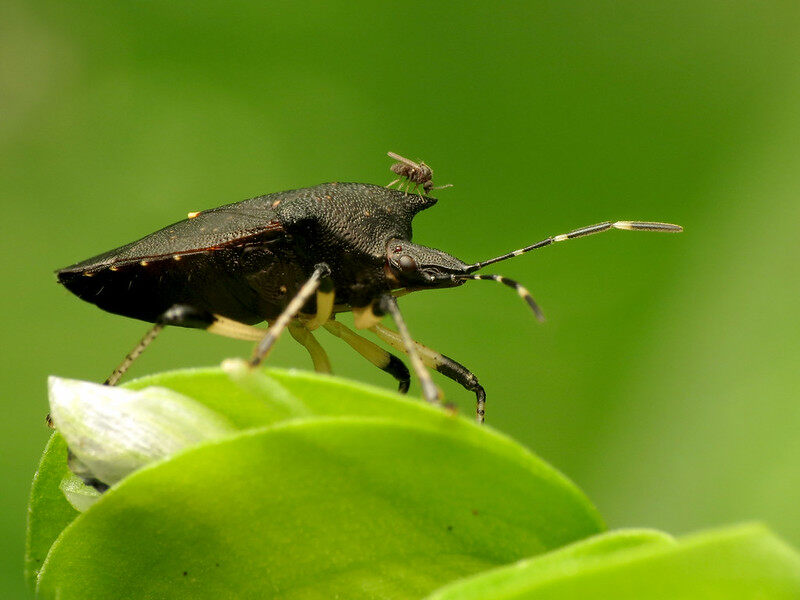
Photo Credit: Katja Schulz / Flickr / CC BY 2.0
Stink bugs are typically found in gardens. They’re not known to be dangerous to humans, but they can ruin your plants. They feed on a variety of plants, and they cause the most damage to fruit, tomatoes, okra, and pecans. They pierce the plant’s surface and suck out its fluids. They alter the plant’s appearance and can weaken the plant. In severe cases, stink bugs can cause the plant to die.
Stink bugs get their name because they emit a foul smell when threatened. They’re very small insects and are usually brown-colored. They have a shield-shaped or oval-shaped body, six legs, and antennae.
Symptoms
If you see that your plants are damaged, you could have stink bugs. Since the bugs emit a foul odor when threatened, you may smell a strong and unpleasant odor. You may see them on walls, plants, or other areas in your backyard.
Causes
They like the warmth, so if you have warm places in your yard, like piles of debris, they may be attracted to them. They also may gravitate to plants they feed on, like pepper and tomatoes. Stink bugs are attracted to cracks and gaps in your home that give them a way into the warmth during the winter weather.
Season
This pest problem usually occurs in the spring and summer.
Treatment
It’s an interesting fact that parasitic wasps, like the samurai wasp, naturally attack stink bug eggs. If you have both stink bugs and wasps, maybe the wasps can kill the stink bug eggs before you exterminate the wasps.
These are a few suggestions for controlling stink bugs:
- Spray plants with soapy water.
- To keep stink bugs off of spring crops, control adjacent weeds and fruit trees.
- Use insecticides with a long residual activity, but be sure to read the labels.
- To keep the bugs from entering your home, seal cracks or gaps, and use window and door screens.
If the bugs have invaded your home:
- Fill a foil pan with water and a couple of drops of dish soap. Place the pan in a dark room with a light shining on it. After the bugs have fallen into it and drowned, empty the pan and repeat the process as necessary.
- Use a wet or dry vacuum to suck up the bugs.
FAQ About Backyard Pests
The most commonly found stinging insects in Virginia Beach are:
- Bald-faced hornets
- Yellow-jackets
- Paper wasps
- European hornets
Overseeding your lawn is a way to repair it. When you overseed you add new grass to your lawn. This stronger grass covers bare spots created by pests. Overseeding has other benefits, including:
- Thickening the lawn
- Enhances thin grass
- Increases grass’s tolerance to disease and future pests
- Improves the look and health of grass, helping it resume its color
- Helps the lawn compete against weeds
Prevention is always best. However, even the most diligent efforts do not guarantee that you will not incur some unwanted critters and insects. Here are some things you can do to be proactive:
- Keep your yard debris free. Debris can make your lawn vulnerable to pests by weakening and thinning the grass.
- Dethatch grass and other plants. Thatch can breed pests that chew on roots, causing damage.
- Select pest-resistant plants.
- Choose plants that attract birds, butterflies, wildlife, and other insects that feed on pests.
- Select a grass type that is less likely to accumulate thatch.
- Follow the maintenance directions for your grass type and plants to reduce the chances of thatch build-up and pest attraction.
I’m Not Scared of You
As long as there is an outdoors, there will be insects and critters. Our job is to do what we can to make sure these pests stay in their lane to protect ourselves and our loved ones and ensure these pests do not interrupt our quality of life.
While there may not be anything that is 100 percent guaranteed to avoid some of these pests, you can at least reduce your chances of an infestation. Now that you know what to look for, you can take measures to proactively guard against these pest problems.
A well-maintained lawn can deter pest invasion. For help maintaining your lawn so that you can spend more time strolling along the Virginia Beach Boardwalk and less time worrying about pests, call a professional lawn care service.
Main Image Credit: Stink Bug / Pxfuel